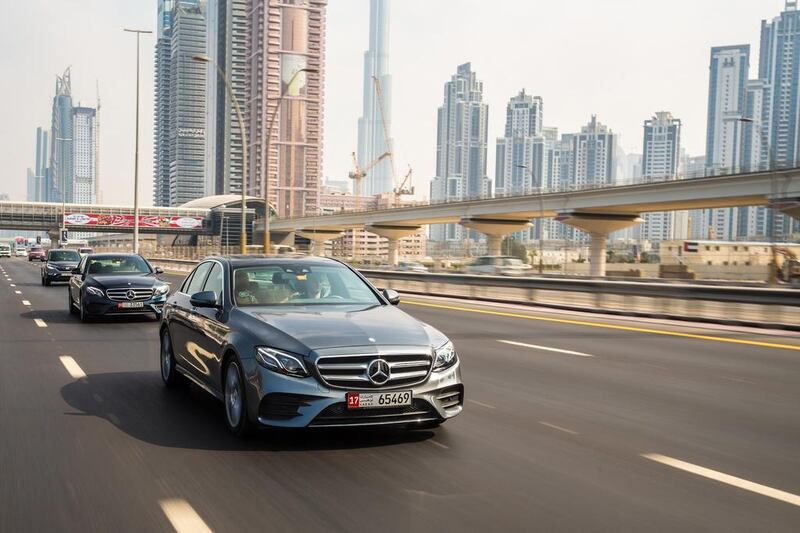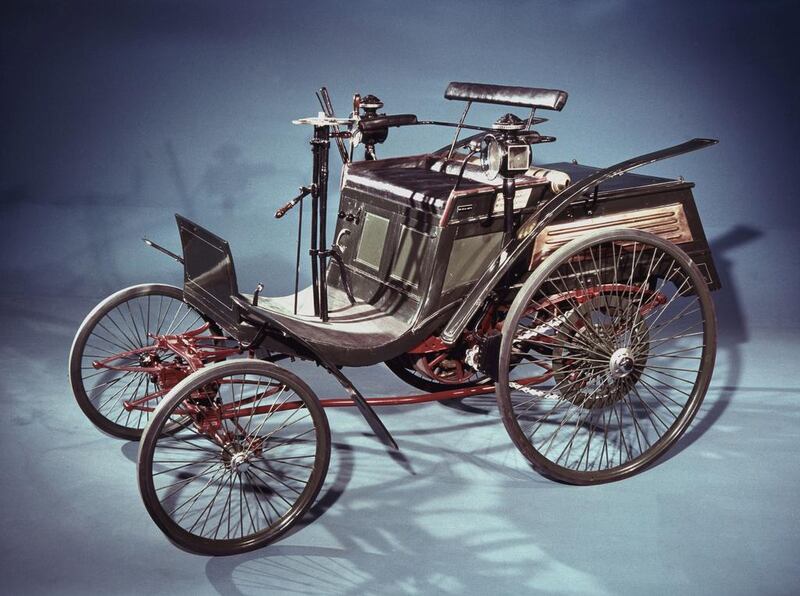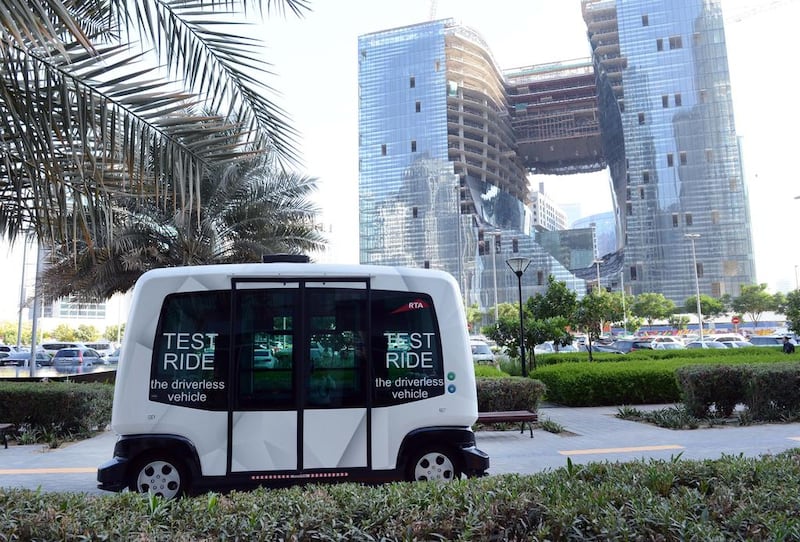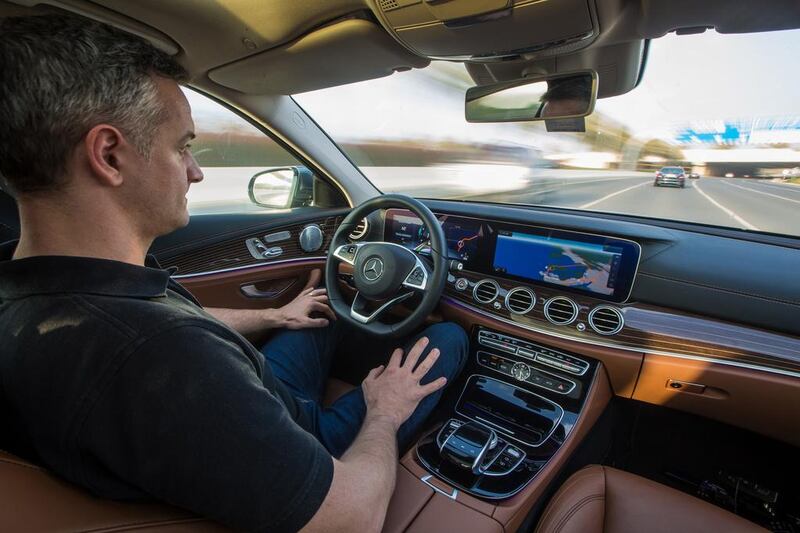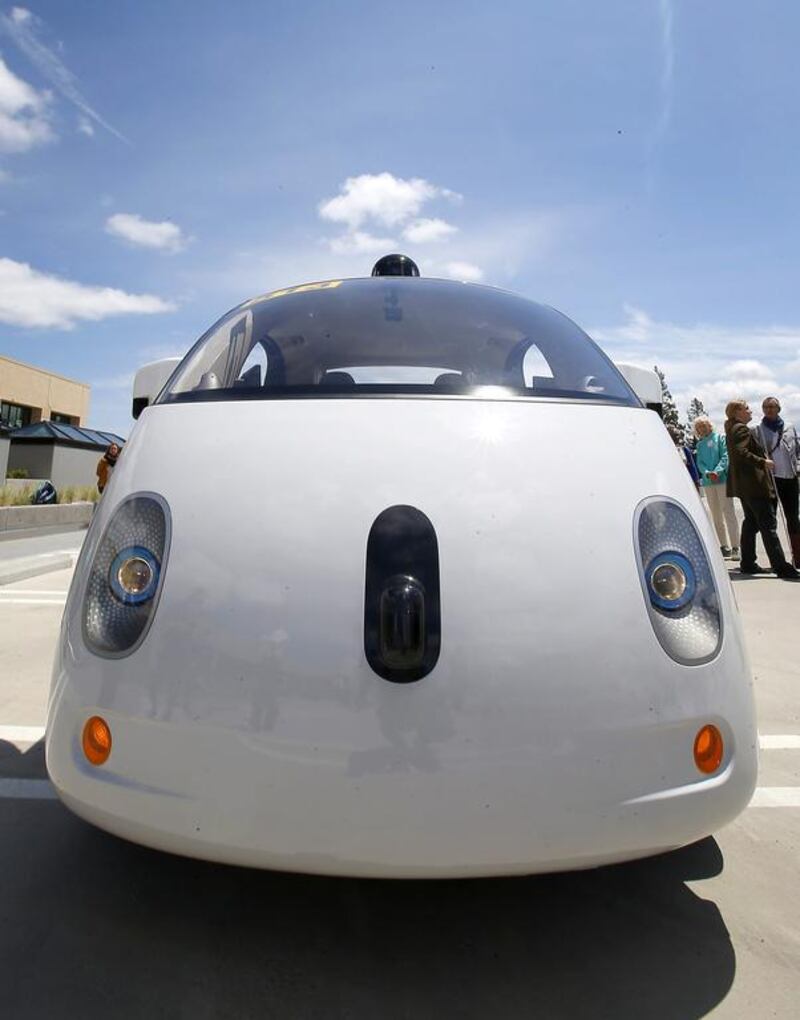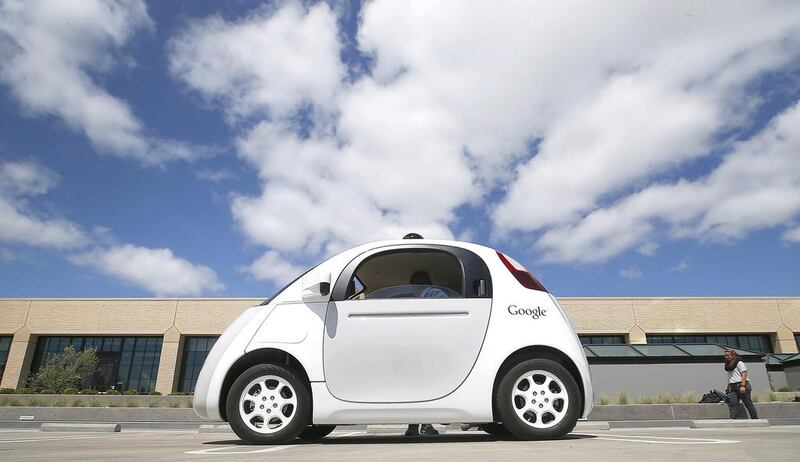On November 4, Andreas Wedel climbed into a silver Mercedes E-Class in Dubai and set off on a trip that was to make history. He was bound for Abu Dhabi – a 150-kilometre high-speed journey straight down the E11 highway. A road notorious for high numbers of aggressively-driven 4x4s does not seem an obvious testing ground, but what Wedel’s team was about to attempt had never been tested in the Middle East before.
Wedel wasn’t driving unaided; in fact, he wasn’t really driving at all. The car had been modified with software that boosted its existing cruise control systems, enabling it to use an array of high-precision sensors to pick up lane markings and the speed and position of the traffic. The car handled steering, brakes and acceleration; all Wedel needed to do was flick the indicator on whenever he wanted the car to change lanes. Everything went smoothly, and the trip was completed without breaching any safety regulations. It could be the easiest drive down the E11 anyone has ever taken.
The team’s achievement may prove an important step on the region’s journey towards automation, bringing the goal of Sheikh Mohammed bin Rashid, Vice President and Ruler of Dubai, to make a quarter of all Dubai’s journeys driverless by 2030, that bit closer.
The drive itself isn’t a world first – a similar feat was undertaken back in 1994, when a team from Bundeswehr University Munich piloted another Mercedes (this time an S-Class) from Munich to Odense, Denmark, with more than 95 per cent of the 1,600km trip driven automatically.
In 2015, Google announced that its software had autonomously piloted cars around the United States for more than 3 million km. These distant achievements, however, can seem somehow irrelevant to everyday drivers in the UAE. For those who regularly brave the E11, Wedel’s achievement brings driverless technology right to the heart of the Emirates.
In Dubai, electric driverless cars are already being trialled in Business Bay. The ten-seaters are designed to run along a designated track and stop if an object comes within two metres of the vehicles. However, there is still a long way to go before you will be able to park a fully self-driving Mercedes E-Class in your garage.
Despite the speed and the need to avoid aggressive drivers, a highway represents a relatively straightforward challenge for a digital driver. These environments lack much of the inherent unpredictability of cities; there are no pedestrians, pets, cyclists or speed bumps. Also, unless something’s gone badly wrong, traffic tends to move at a fairly constant speed. What makes highway driving a pain for humans is that it requires patience, attention to dull surroundings despite the monotony of a straight road and a constant awareness of surrounding traffic – all things which computers are much better than us at doing.
City driving, however, is not only much easier to pay attention to but also involves a number of very human calculations. Is that child about to chase a ball into the road? Is my neighbour about to reverse out of his drive without looking, again? Where am I likely to find a parking space at this time in the morning?
Work on solving these urban problems is already well under way. In 2015, the University of Michigan opened a 32-acre model city, complete with stop signs, sidewalks and removable buildings. This facility is designed to enable prototype vehicles to navigate complex real world situations without killing anyone, and help companies to prepare for real-life testing. One such company is Uber, which has teamed up with Volvo, hoping to repeat its successful disruption of the taxi industry in the field of driverless cars.
The technology with which they plan to do this is impressive. Uber’s fleet of semi-autonomous cars are not only equipped with multiple cameras, giving them an unblinking 360-degree view of traffic, but a host of other sensors, including radar and an extremely accurate GPS. The most prominent of these is the LiDAR system; a chunky, whirling array of mirrors mounted on the car’s roof. This scatters millions of laser beams across the road, enabling the car to build up a real-time 3-D map of its environment. The technology is so good at mapping terrain that Nasa has said it could be a key part of future planetary landings.
The information from all these sensors is fed into a suite of software, which is able to work out what is on the road and control the car accordingly. In deciding what to do, these cars are able to draw on not only an extremely detailed map of the area but also millions of miles of real-world driving experience. Furthermore, every trip taken by every car adds to the available stock of information.
Whether the public can be convinced to trust the cars or not, the detailed maps and records of driving behaviour being built up by companies like Uber are likely to drive innovation themselves.
But this technology’s latest excursion into the real world has not been going as smoothly as Uber may have liked, and the company has had an interesting couple of weeks. On December 14, the company started offering users a ride in a self-driving Volvo, complete with a human co-pilot who would take over in case anything went wrong.
These cars, easily distinguishable by snappy branding and their spinning LiDAR hats, were soon spotted driving recklessly and running red lights. While Uber blames these incidents on human error by the car’s back-up drivers, it wasn’t just the suspect motoring which caused concern, it seems the company declined to tell anyone at California’s department of motor vehicles about the tests. San Franciso’s mayor Ed Lee promptly demanded that Uber remove its cars from the road, since it had not applied for automated vehicle permits. Uber refused, claiming that its cars were constantly monitored by humans – in other words, that they were not fully-automated. But since then the company backed down and these cars were taken off the streets.
It would be wrong, however, to see a squabble between a provocative company and a protective mayor as a serious problem for driverless cars. As with any new technology, the introduction of autonomous vehicles to public streets will require governments and regulators to adapt existing laws, just as the companies building these machines constantly adjust their behaviour after each drive. As in the UAE and the United Kingdom, many governments are already signalling they are eager for such a change.
So when might we see these cars on the streets of Abu Dhabi, and what might a driverless future look like? Well, a useful illustration of what might be in store can be found in the annals of philosophy – specifically in one man’s thoughts on scientific revolutions. In 1962, philosopher and physicist Thomas Kuhn suggested there were two distinct stages to scientific progress. The first of these he called “normal science”.
During these stages, science and technology advance in steps, with each innovation building on the progress made before it. Things are improved, and some minor problems with preceding technology and theories might be corrected, but change overall is gradual – the core rules of the game stay the same.
This is one way in which the driverless age could be ushered in – with a series of small tweaks and improvements to existing vehicles. This is certainly how things seem to have progressed so far – after all, aspects of “self-driving” technology have been built into cars for decades; take, for example, Anti-lock braking systems (ABS). These ensure that even when a panicked driver slams their brakes on, the wheels don’t stop turning entirely, which would cause an uncontrollable skid. Instead, sensors monitoring each wheel’s speed ensure the brakes are applied until the exact point at which the wheel stops spinning, then released momentarily; this can happen 15-times a second. ABS represent the automatic application of a technique which it can take professional drivers years to perfect, but is now so widely available that it almost goes unnoticed. Recent years have seen similar advances in cruise control and distance sensors; even cars which can steer themselves into a parking space. Each of these is a small step towards full automation.
This gradual approach seems to be the one on which the major, established manufacturers are betting on. It’s telling that the Mercedes that drove itself from Dubai to Abu Dhabi looked exactly like a standard E-Class and used an adapted version of an existing car’s cruise control system. Under this picture, the self-driving future might not look too different from the way things are now; our cars will still need drivers, pedals and indicators, but we’ll spend more time engaging systems which allow us to take our hands off the wheel. One day, we may be cruising automatically around our neighbourhoods, without really noticing it’s happened.
Kuhn, however, outlined a second type of progress. Sometimes, he noted, an idea is proposed that advances its field by challenging key assumptions of the work that came before it. A good example of this is Copernicus’s proposal in 1543 that the Earth, rather than sitting motionless at the centre of the universe, in fact revolves around the Sun. Such revolutionary theories challenge accepted rules, force people to reconsider their assumptions, and can lead to frenzied new phases of discovery, a process Kuhn called a “paradigm shift”.
In the car industry, this revolutionary spirit has best been displayed by Google. In 2014, the company launched the snappily-named “Google self-driving car”, quickly dubbed “the Koala” due to its cutesy appearance. The vehicle was remarkable not only because it looked a bit like a bear, but because it challenged core beliefs about how a car should work. The Koala is a car that cannot be driven by a human. It’s small but spacious, and has no steering wheel, pedals or dashboard; though it does contain leather seats and two cup holders. Importantly, this means it could be used by anyone, including the blind and the infirm.
In removing the controls, Google asks a provocative question – if we can build a car which doesn’t need a driver, what else can we do without? Once there’s no need to pay attention to the road, why should the seats face forwards? Indeed, in a vehicle equipped with 360-degree vision, able to travel happily in either direction, why should the car have a ‘front’ at all?
Groundbreaking ideas, however, often face resistance from the system they hope to change. Many were unimpressed by the Koala’s top speed of 25-miles-per-hour, and officials baulked at the idea of letting a car on the road without any possibility of manual control. For the moment, the car has been dropped – Google’s newly-minted self-driving offshoot, Waymo, has announced it is abandoning plans to manufacture its own vehicles, concentrating instead on building automation systems for cars made by other companies.
In the short-term, it looks like the advance of driverless technology will be incremental, not revolutionary. The Koala, however, could still prove to be a glimpse of the future. Paradigm shifts tend to occur when an existing system collapses under the weight of internal contradiction or external pressure, and the need to provide safe, clean transport to an ageing population may soon trigger such a crisis.
It took more than 100 years after Copernicus’s death for his theory to be widely accepted, and that involved shifting the centre of the universe. Nothing in the self-driving car world is settled yet.
Josh Smith is a software developer and researcher at the Demos think tank.
